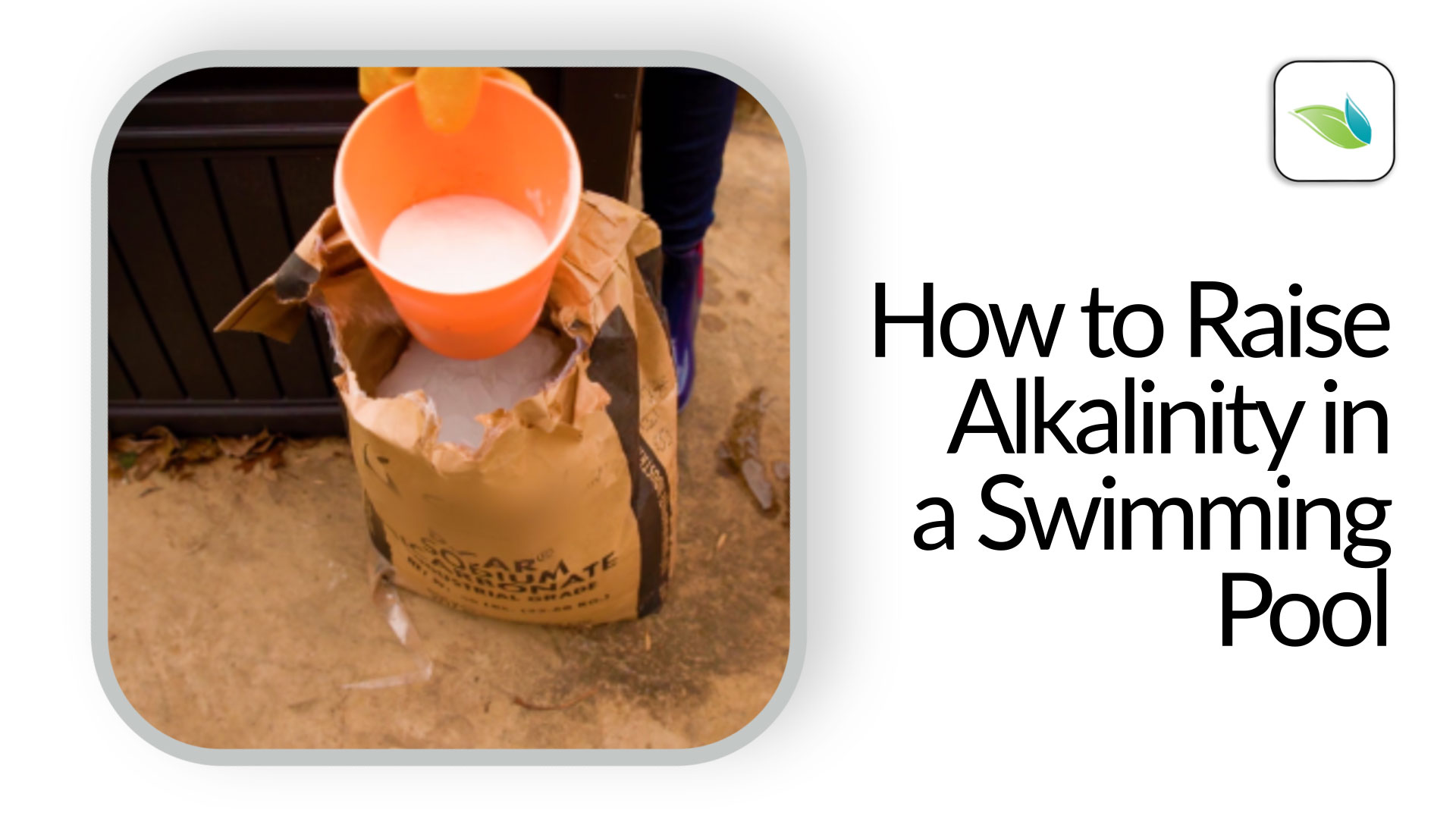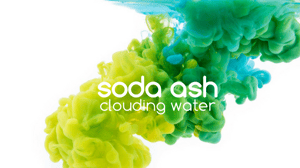How to Add Soda Ash or Sodium Bicarb to a Swimming Pool

Do you need to raise alkalinity or pH in your swimming pool? If so, there are two dry chemicals that you can choose from. One is sodium bicarbonate (bicarb), and the other is a higher pH substance called soda ash.
This article will walk you through how to safely and properly add either of these chemicals. And yes, bicarb and soda ash are different! The procedure for adding them, however, is identical. We just dose them differently. Adding dry chemicals like soda ash and sodium bicarb is not as simple as it sounds...you don't just throw them in the pool. Like any other dry chemical, we should pre-dissolve sodium bicarb or soda ash in a bucket prior to adding to the pool. Let's explain.
Raise Alkalinity in Water
Total Alkalinity is a measurement of the concentration of dissolved alkali in water (measured in parts-per-million, or ppm). Dissolved alkali neutralizes acid, but more importantly, it has the ability to both accept and give away Hydrogen ions. This makes alkalinity a buffer of pH. We measure Total Alkalinity, which is all dissolved alkali in the water. Indices like the LSI require narrowing down and finding the amount of carbonate alkalinity in water (by removing cyanurate alkalinity)...but that's at topic for another article. Oh wait, we have several of them already written! Feel free to indulge yourself on the sweet nectar of pool chemistry knowledge. Mmmm.
- Carbonate Alkalinity vs. Total Alkalinity
- Minimal Cyanuric Acid (Pillar 4)
- What is Alkalinity?
- Total Alkalinity vs. pH, and their roles in water chemistry
Ideally, alkalinity is kept between 80-120 ppm, according to most textbooks. Winter water chemistry will usually need more than 120ppm alkalinity in our opinion, because cold temperatures lower the LSI and make water more aggressive. If you need to increase alkalinity in a pool, you will either need sodium bicarbonate or soda ash.
Sodium Bicarb vs. Soda Ash
Many people think bicarb and soda ash are the same thing. They are not. The pH difference between them is substantial; soda ash is approximately 1000-1200 times more basic than sodium bicarb. Let's look at the pH scale below.

This massive difference in pH is why we recommend neutralizing acid washes with soda ash, not bicarb. It is also why such a small amount of Soda Ash can have more of an impact on pH and alkalinity than a much larger amount of sodium bicarb. For example, if you throw in soda ash without pre-dissolving it first, it tends to cloud up the pool. This clouding phenomenon is explained in detail here.
Conflicting Chemicals
 Never mix sodium bicarb or soda ash with calcium chloride. These chemicals are incompatible because they will bind together and cloud up...bad. If you have ever mixed the two in a bucket, or even the Orenda Startup Barrel™, you know this already. The concentrations of the two chemicals are too high. In fact, as a best practice, we recommend against even adding calcium on the same day as bicarb or soda ash, even on other ends of the pools. Sometimes it must be done, but avoid it if possible.
Never mix sodium bicarb or soda ash with calcium chloride. These chemicals are incompatible because they will bind together and cloud up...bad. If you have ever mixed the two in a bucket, or even the Orenda Startup Barrel™, you know this already. The concentrations of the two chemicals are too high. In fact, as a best practice, we recommend against even adding calcium on the same day as bicarb or soda ash, even on other ends of the pools. Sometimes it must be done, but avoid it if possible.
Just as a rule of thumb, when you're adding any dry chemical, add it to water by itself, and pre-dissolve it before pouring it in the pool.
How to Add Soda Ash or Bicarb
You will need:
- A reliable test kit that measures alkalinity and pH
- A 5-gallon plastic bucket
- Safety equipment - glasses and gloves
- Something to stir with - like a wooden paint-stirring stick
- Sodium Bicarbonate or Soda Ash - The Orenda App displays both
- A dry measuring cup or bucket - dose properly. Don't cut corners.
Step 1
Test your pool water and your fill water for pH and total alkalinity. Record results. The Orenda app will tell you exactly how much of either product you need. Bring the bag of soda ash/bicarb and the items above to the pool, and put on safety glasses and gloves.
Step 2
Dip the bucket into the pool until it is about 3/4ths full of water. Slowly pour the measured amount of soda ash or bicarb into the bucket. If your dose is more than the bucket can handle, you will need to repeat these steps, or use multiple buckets. We strongly advise you to use good judgement in how much a bucket can handle. Do not exceed 15 pounds per bucket, as it can become difficult to dissolve.
Step 3
Stir until the powder is completely dissolved. Pouring undissolved bicarb or soda ash can cloud up the pool. Sodium bicarb can also make it to the bottom of the pool and settle there without dissolving. So be sure what you have mixed is actually dissolved before step 4.
Step 4
Slowly pour the completely dissolved solution into the pool. Maybe do about half the bucket, then let fresh pool water into the bucket, and stir again, and slowly pour again. Use your best judgement. Do NOT pour the solution directly into the skimmer. Add it around the perimeter of the pool.
Final Thoughts
It may sound ridiculous to follow such a thorough procedure for such benign chemicals. But hey, the chemical SDS sheets say to use safety gear and we are not going to disagree. We promote best practices, and always will.
The Orenda App's calculator may show you both a soda ash and sodium bicarb dosage. This is because our calculator is just a computer...it does not know if you are modifying both pH and alkalinity at the same time. It just tells you soda ash to raise pH, and sodium bicarb to raise alkalinity. Be mindful of this, and adjust alkalinity first. Then, re-test pH and adjust accordingly.
If you do add soda ash and it clouds up the pool, either it was added too fast, or it was simply too much. This is why pre-dilution is a good idea. You can actually dilute down the pH of the bucket so it is not such a shock to the pool, drawing calcium out of solution.
We hope this article helps you add sodium bicarb and/or soda ash properly.
